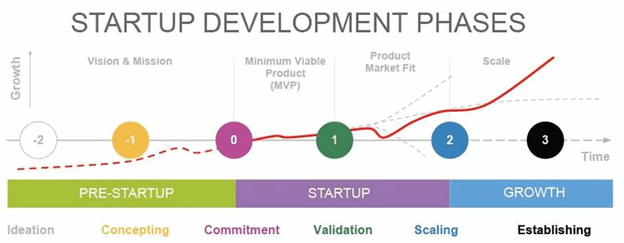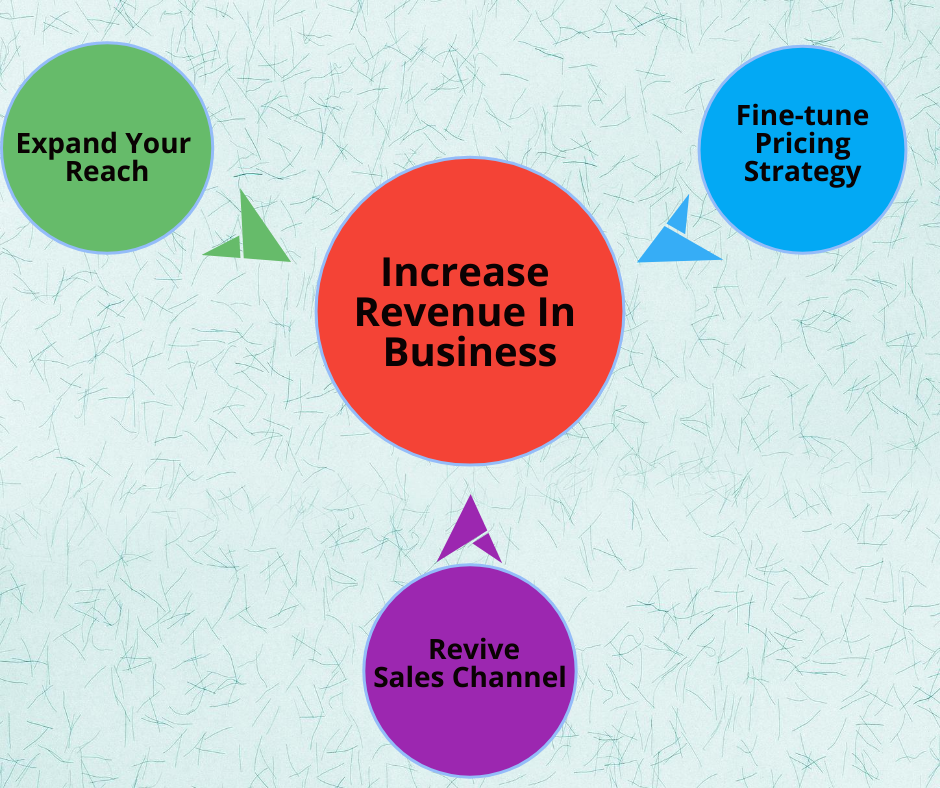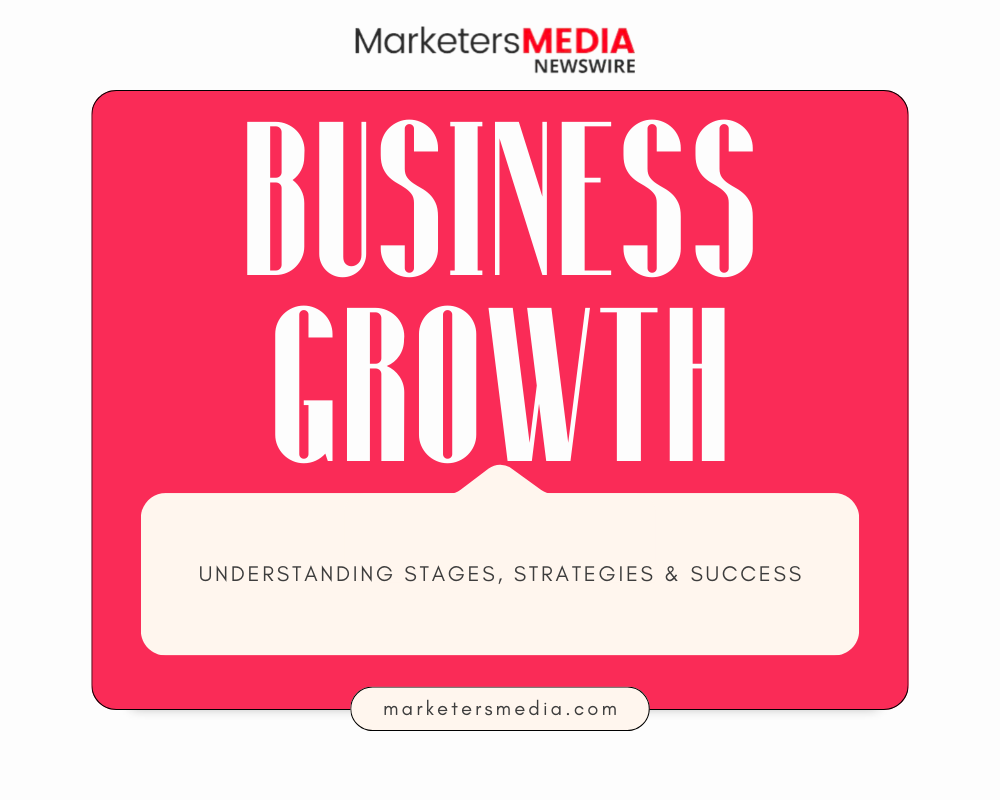Table of Content
No headings found.
In the ever-evolving landscape of business, growth is not just a goal but a necessity. It's akin to sailing through turbulent waters in the industry; some businesses thrive while others struggle to stay afloat. The key lies in strategic decisions and innovative approaches that set successful ventures in new industries apart from stagnant ones.
To achieve sustainable growth, successful business companies must embrace change, adapt swiftly, and capitalize on emerging opportunities. This journey in the industry demands resilience, creativity, and a willingness to challenge the status quo. While some may fear the unknown path ahead, those who dare to innovate are poised for remarkable success in industries.
Understanding Business Growth
Growth Definition

Business growth encompasses the enhancement of a company's revenue, market share, or customer base over time. It involves expanding and refining operations to achieve long-term success. This expansion can be quantified through financial metrics like profit margin, return on investment, and shareholder returns.
To illustrate, consider a small local bakery that starts selling its goods online nationwide. As the online orders increase and reach new customers in different regions, the bakery experiences business growth by expanding its market reach and boosting revenue.
Importance
Business growth is fundamental for sustaining competitiveness in today's ever-evolving marketplace. It empowers businesses to seize emerging opportunities and maintain an edge over rivals. Growth aids companies in attracting top talent, securing funding for further development, and establishing a robust brand reputation.
For instance, a tech startup that continuously innovates its products attracts skilled professionals eager to contribute to cutting-edge projects due to the company's reputation for growth potential.
Types
Organic growth entails internal expansion through increased sales efforts and deeper market penetration within existing markets. On the other hand, strategic growth concentrates on forming partnerships, alliances, or collaborations to harness external resources effectively.
An example of organic growth is when a software company gradually expands its client base by offering additional services or solutions tailored to meet evolving customer needs within their current target market.
Mergers and acquisitions represent another type of business growth strategy involving combining two or more entities to accelerate expansion rapidly while leveraging synergies between them.
Stages of Small-Business Growth
Development Phase

The development phase marks the inception of business growth. Entrepreneurs refine their ideas, conduct market research, and create prototypes to test business feasibility. Securing funding and building a strong team are crucial for future success.
During this stage, entrepreneurs focus on shaping their initial concepts into tangible products or services. For example, a tech startup may develop a minimum viable product to gather user feedback before full-scale production.
Startup Phase

The startup phase signifies the launch of the business and acquiring early customers. Businesses concentrate on establishing product-market fit, refining operations, and generating initial revenue streams. Challenges in scalability and resource constraints often arise during this phase.
In this period, startups work towards gaining traction in the market by offering unique value propositions to attract early adopters. For instance, a new restaurant may focus on creating buzz through social media promotions to draw in local diners.
Expansion Phase
The expansion phase is characterized by businesses aiming to grow their customer base and increase market share significantly. This can involve opening new locations, expanding distribution channels, or targeting untapped market segments. Effective marketing strategies play a pivotal role in driving growth at this juncture.
Businesses strategize ways to reach new audiences while retaining existing customers during the expansion phase. For instance, an e-commerce store might explore international markets or introduce new product lines to diversify its offerings.
Maturity Phase
The maturity phase denotes when a business has established itself as a stable player in the market landscape. The primary focus shifts towards maintaining market share levels optimizing operational efficiency for maximum profitability gains continuous innovation remains vital for sustained growth during this stage.
At this point businesses look inwardly at process improvements cost-saving measures innovative practices that set them apart from competitors.
Key Growth Strategies
Market Penetration

Market penetration involves increasing sales of existing products or services in current markets. This strategy focuses on capturing a larger share of the target market and enhancing customer loyalty. Achieving this can be done through aggressive marketing campaigns, competitive pricing strategies, or expanding distribution channels. For instance, offering discounts to attract new customers or launching promotional offers to encourage repeat purchases are common market penetration tactics.
Businesses often use market research to identify opportunities for growth within their current customer base. By understanding consumer preferences and behaviors, companies can tailor their strategies to meet evolving demands effectively. Moreover, building strong relationships with distributors and retailers can facilitate wider product availability and boost sales volume significantly.
Pros:
- Cost-effective way to drive revenue.
- Enhances brand visibility.
Cons:
- May lead to price wars with competitors.
- Risk of saturating the market quickly.
Product Development

Product development is essential for businesses aiming at sustained growth by creating new offerings that cater to changing customer needs. This strategy involves extensive research, design efforts, testing phases, and successful launches of innovative products or features. For example, tech companies frequently introduce updated versions of their gadgets with enhanced functionalities based on user feedback.
Investing in product development not only helps companies stay ahead in the competitive landscape but also attracts new customers seeking cutting-edge solutions. By continuously refining existing products or introducing novel ones that address emerging trends, organizations can diversify their revenue streams and expand their market reach effectively.
Pros:
- Differentiates the business from competitors.
- Drives revenue growth through innovation.
Cons:
- Requires substantial investment in R&D.
- Success is not guaranteed; some product launches may fail initially.
Approaches to Business Expansion
Organic Growth
Organic growth involves expanding a business through internal efforts like boosting sales and enhancing operational efficiency. By utilizing existing resources effectively, companies can increase market share sustainably. This strategy requires a strong emphasis on innovation, customer satisfaction, and continuous enhancement of processes. For example, a retail company might achieve organic growth by opening new stores in different locations rather than acquiring existing ones.
Pros:
- Sustainable long-term growth
- Greater control over the expansion process
Cons:
- Slower pace compared to other strategies
- Requires significant investment in research and development
Strategic Growth
Strategic growth focuses on forming partnerships or alliances with external entities to access additional resources and capabilities. Businesses may engage in joint ventures, licensing agreements, or strategic alliances with complementary firms to expedite their expansion plans. This approach enables companies to rapidly grow their operations, enter new markets swiftly, or broaden their product/service offerings. An example of strategic growth is when a technology startup collaborates with an established software company for mutual benefit.
Key Information:
- Accesses external expertise and resources
- Enhances competitive advantage through synergies
List of Examples:
- Joint ventures
- Licensing agreements
Mergers and Acquisitions

Mergers and acquisitions involve combining two or more companies to achieve business growth by leveraging synergies between them. This strategy allows businesses to tap into new markets, technologies, or customer segments that were previously inaccessible independently. Successful mergers require meticulous due diligence procedures, thorough integration planning post-acquisition completion phase as well as aligning organizational cultures for seamless operations moving forward.
Steps for M&A Success:
- Conduct comprehensive due diligence.
- Develop an integration plan.
- Ensure alignment of organizational cultures post-merger/acquisition.
Planning for Growth
Setting Goals
Setting goals is crucial for business growth. These goals should be specific, achievable, relevant, and time-bound (SMART). For instance, a goal could be to increase revenue by 20% within the next fiscal year. Regularly reviewing and adjusting these goals keeps the business on track with its objectives as the market evolves.
Market research plays a vital role in guiding business growth strategies. By conducting thorough research, companies can gain insights into customer needs, market trends, and competitors' activities. This information is invaluable for developing effective marketing strategies tailored to meet consumer demands and identify new opportunities while minimizing potential risks.
Research
Utilizing both primary and secondary research methods enhances decision-making processes by providing comprehensive data from various sources. For example, primary research could involve surveys or focus groups to gather direct feedback from customers. On the other hand, secondary research may include analyzing industry reports or competitor data to understand market dynamics better.
Effective strategy planning is essential for sustainable business growth. This process involves assessing internal strengths and weaknesses alongside external opportunities and threats (SWOT analysis). By defining target markets, positioning products effectively in those markets, and allocating resources efficiently based on strategic priorities businesses can create a roadmap that guides them towards achieving their growth objectives.
Execution of Growth Plans
Hiring Right

Hiring the right talent is pivotal for business growth. Companies should clearly outline the necessary skills and competencies required for each role. By conducting comprehensive recruitment processes, businesses can ensure they attract candidates who align with their vision and goals. Ongoing training programs not only enhance employees' skills but also keep them motivated to contribute effectively.
Building a high-performing team has a direct impact on productivity, innovation, and customer satisfaction levels. For example, a software development company looking to expand its services may prioritize hiring developers proficient in emerging technologies like artificial intelligence or blockchain. This strategic hiring approach ensures that the business remains competitive in the market by offering cutting-edge solutions to clients.
Pros:
- Boosts productivity and innovation.
- Enhances customer satisfaction.
Cons:
- Lengthens recruitment process.
- Training costs might increase initially.
Measuring Growth
Monitoring key performance indicators (KPIs) is essential when tracking business growth. KPIs such as revenue growth rate, customer acquisition cost, or customer lifetime value provide valuable insights into the effectiveness of implemented strategies. Analyzing these metrics helps companies identify successful tactics and areas that require improvement.
Regularly monitoring KPIs enables businesses to make informed decisions based on data-driven insights rather than intuition alone. For instance, an e-commerce platform analyzing its conversion rates may discover that a specific marketing campaign significantly boosts sales during certain periods. This information allows the company to allocate resources more efficiently towards successful campaigns for sustained growth.
- Revenue growth rate indicates overall financial health.
- Customer acquisition cost shows efficiency in acquiring new customers.
- Customer lifetime value reflects long-term profitability potential.
Leveraging Digital Marketing
SEO Content Writing

SEO content writing focuses on creating website content to rank high in search engine results. It involves keyword research, optimizing meta tags, and building backlinks. Effective SEO content drives organic traffic, improves online visibility, and supports business growth. For example, a company that specializes in eco-friendly products can use SEO content to attract environmentally conscious consumers searching for sustainable options.
Viral Marketing
Viral marketing aims to create buzz and generate rapid brand awareness through social sharing. By creating compelling and shareable content that resonates with target audiences, businesses can achieve exponential growth in brand exposure and customer acquisition. An excellent illustration of viral marketing is when a video showcasing a unique product feature goes viral on social media platforms like TikTok or Instagram.
Leveraging Platforms
Leveraging platforms such as e-commerce marketplaces or social media channels enables businesses to reach a broader audience. These platforms offer access to established user bases, built-in marketing tools, and streamlined payment processes. Integrating with platforms accelerates business growth by expanding reach and driving sales effectively. For instance, a small boutique clothing store can leverage an e-commerce marketplace like Etsy or Amazon to showcase its products globally.
Funding and Investments
Revenue Strategies

Revenue strategies are crucial for business growth, focusing on maximizing income streams and diversifying revenue sources. Introducing subscription models, upselling or cross-selling products, and exploring new markets are common tactics. These strategies drive profitability by ensuring a steady flow of income over time.
By implementing effective revenue strategies, businesses can secure long-term growth while enhancing their financial stability. For instance, a software company may introduce a subscription-based model to generate recurring revenue from customers instead of relying solely on one-time purchases.
- Maximizes income streams
- Diversifies revenue sources
- Enhances financial stability
Funding Strategies
Funding strategies play a vital role in supporting business growth by providing the necessary capital for expansion. Identifying appropriate sources of funding is essential to ensure sustainable development. Options such as bootstrapping, angel investors, venture capital funding, or crowdfunding campaigns offer different avenues for securing financial resources.
Choosing the right funding strategy is critical for businesses aiming to achieve their growth objectives effectively. For example, a tech startup might opt for venture capital funding to scale operations rapidly and enter new markets with substantial financial backing.
- Provides necessary capital
- Ensures sustainable development
- Supports growth objectives
Tips for Success
Competitive Advantage

Developing a competitive advantage is crucial for business growth. This can be achieved through differentiation strategies, cost leadership, superior customer service, or technological innovation. For instance, Apple's competitive advantage lies in its innovative product design and user-friendly technology.
A strong competitive advantage enables businesses to outperform competitors and capture market share. By focusing on what sets the business apart from others, companies can attract more customers and drive revenue growth.
- Differentiation strategies
- Cost leadership
- Superior customer service
- Technological innovation
Value Creation Rules
Value creation rules involve delivering superior value to customers through innovative products, exceptional service, or unique experiences. For example, Amazon excels in value creation by offering a wide range of products with fast delivery options at competitive prices.
Businesses should focus on understanding customer needs, exceeding expectations, and building long-term relationships to create sustained value. By consistently creating value for customers through their offerings and services, businesses can drive customer loyalty and positive word-of-mouth referrals leading to sustainable growth.
- Innovative products
- Exceptional service
- Unique experiences
Summary
You've now grasped the essence of business growth, from understanding its stages to implementing key strategies and leveraging digital marketing. Planning and executing growth plans, along with securing funding, are vital steps in taking your business to the next level. Remember, success in business growth isn't just about luck; it's about strategic planning, dedication, and adapting to market changes.
As you embark on your journey towards business expansion, keep in mind that challenges will arise, but with perseverance and a clear vision, you can overcome them. Stay focused on your goals, continuously reassess your strategies, and don't hesitate to seek guidance or mentorship when needed. Your commitment and hard work will pave the way for your business to thrive and reach new heights.
Frequently Asked Questions
How can I effectively plan for business growth?
To plan for business growth, start by setting clear goals, analyzing market trends, understanding your target audience, and creating a detailed strategy. Ensure to regularly review and adjust your plans based on performance metrics and feedback.
What are the key strategies for successful business expansion?
Key strategies for successful business expansion include diversifying products/services, entering new markets, strategic partnerships or acquisitions, investing in technology/tools, and focusing on customer retention. Each strategy should align with your overall growth objectives.
How can digital marketing help in accelerating business growth?
Digital marketing can accelerate business growth by increasing brand visibility online, reaching a wider audience through targeted campaigns, engaging customers through social media platforms and email marketing. It allows businesses to track performance metrics in real-time for better decision-making.
What role do funding and investments play in achieving sustainable growth?
Funding and investments provide the necessary capital to fuel expansion initiatives such as product development, marketing efforts or infrastructure upgrades. Securing funding from investors or financial institutions is crucial for sustaining long-term growth trajectory of a business.
What are some practical tips for ensuring success during periods of rapid business growth?
During rapid business growth phases it's important to maintain focus on core objectives while adapting quickly to changing market dynamics. Delegate responsibilities effectively within the team structure; stay agile yet proactive in decision-making processes; prioritize customer satisfaction alongside operational efficiency.
Free Press Release Template
Tell us where to send your PDF:







